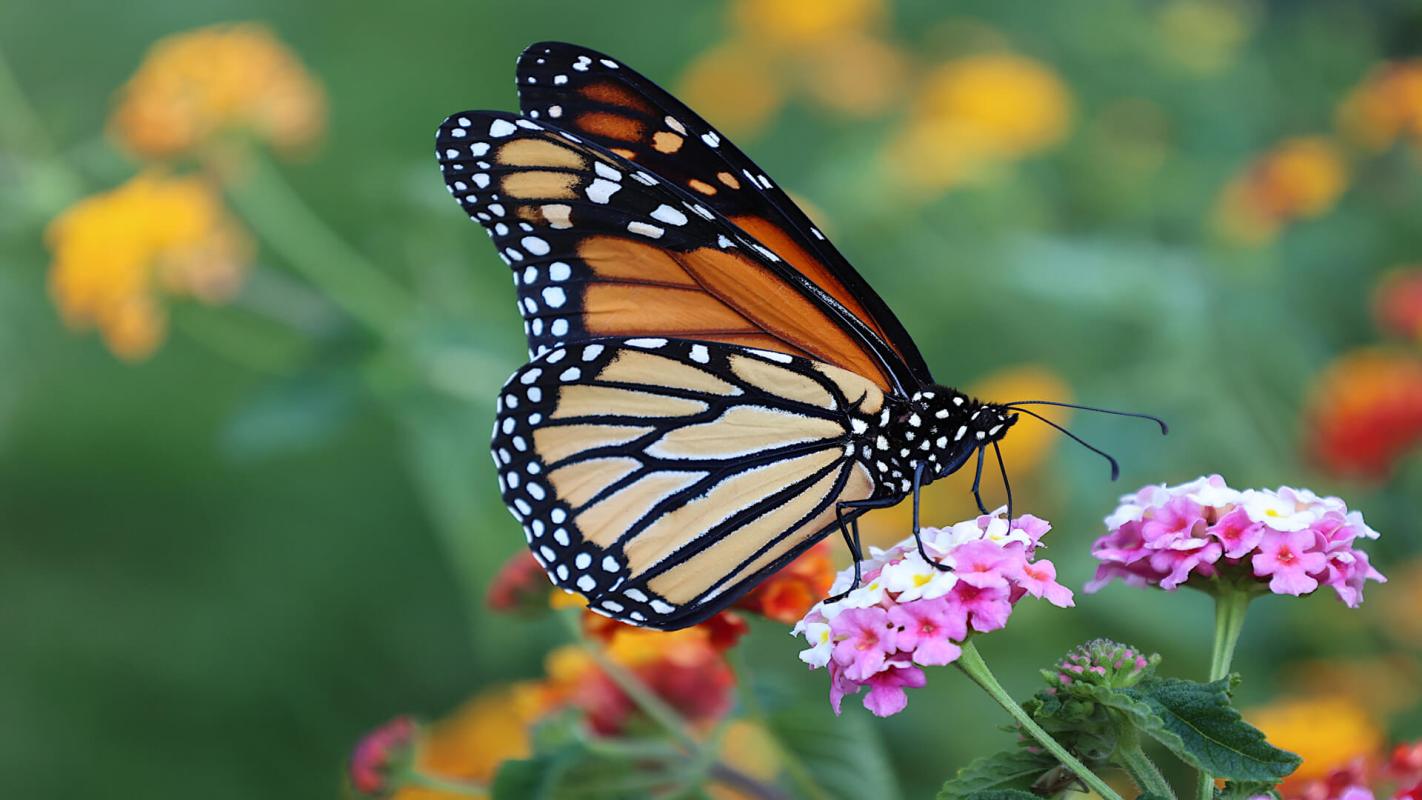Monarch butterflies are undoubtedly one of the most recognizable insects in the Americas, with their iconic black and orange wings.
But they're not just their looks — monarchs are also critical pollinators.
They pollinate the world's flowering plants and food crops, so without them, we would have fewer flowers, fruits, and vegetables.
But even as crucial as the beloved butterflies are to our food chain, populations are declining –– in the last decade, monarch populations have decreased by between 22% and 72%.
To raise more awareness and garner protection for this species, The International Union for Conservation of Nature (IUCN) added the migratory monarch butterfly to its Red List of Threatened Species as an endangered species. Even though researchers in California's San Luis Obispo County counted more monarchs this year than at any time in the last 20 years, their population remains at risk of collapse.
How they became endangered
The main threats to monarch butterflies include the use of pesticides, urban development, global overheating rising, and increased extreme weather events.
Pesticides and herbicides directly harm monarch butterflies and the milkweed plant they use to lay eggs.
Urban development replaces their natural habitats with buildings. Each generation of monarch butterflies migrates according to temperature, so as temperatures increase, their migration patterns change, and many butterflies die during migration.
And extreme weather events only worsen habitat loss and migration disruptions.
What endangered status means for monarch butterflies
In 2020, the U.S. Fish and Wildlife Service (FWS) declined to list this species as threatened to conserve resources for higher-priority endangered species.
Listing monarchs as endangered would require the government to create and pay for a recovery plan and would force federal agencies to obtain approval from the FWS for various projects, like expanding interstate highways.
But protection for monarch butterflies cannot wait any longer.
On July 21, 2022, the IUCN officially classified the monarch butterfly as endangered.
That distinction is a pretty big deal, since the IUCN's Red List highlights the actions needed to protect a species.
This list of species influences policy, informs conservation planning, guides scientific research, and influences resource allocation.
Although adding the monarch butterfly to the IUCN Red List makes this species scientifically endangered, it does not make them legally endangered. In other words, the monarch butterfly is recognized as an endangered species but does not have federal protection in the U.S. that would help save populations.
Monarch butterflies have a migration pattern that stretches across North America. Because Canada, Mexico, and the U.S. have their own species protection agencies, federal conservation can be tricky.
However, their expansive migration patterns also mean individuals across three countries can support monarch butterflies.
How you can help
Insects reproduce quickly, so supporting monarch butterfly populations in small ways can have a huge impact.
And the fact that migratory monarchs are backyard insects means that everyone can pitch in.
One of the easiest things you can do to help monarch butterflies is to plant milkweed, the food source for caterpillars. Adding more native flowers can also make your backyard more friendly to butterflies.
Try replacing toxic synthetic pesticides and herbicides with natural alternatives, like boiling water to kill weeds.
As enthused as you might be to protect monarch butterflies, please do not hold these insects captive.
Talk to your friends, family, and neighbors about monarch butterfly endangerment and share how they can help.
Now that monarch butterflies have been scientifically declared an endangered species by the IUCN, it is critical to protect this pollinating insect.
Thankfully, we can help this species flutter away from extinction with acts as simple and fun as planting flowers.
Follow The Cool Down on Instagram and subscribe to our newsletter.








